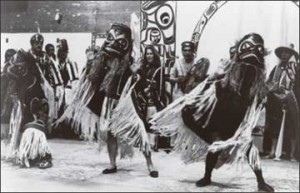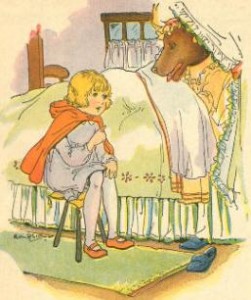For Dr. Paterson’s proposed questions for lesson 3.1, I have chosen to examine number two. That is, researching one of the state or governing activities “that excluded and discriminated against certain peoples based on ideas about racial inferiority and capacities to assimilate”. I have chosen to look research the Indian Act 1876 for many reasons – mostly driven by the feelings of anger and misunderstanding of this disgraceful piece of government legislation.
The Indian Act is a Canadian federal law that “authorizes the Canadian federal government to regulate and administer in the affairs and day-to-day lives of registered Indians and reserve communities” (Hanson). This act seeks ultimate control over Aboriginal affairs, in the form of inserting control over the ways and rights in which First Nations can practice their culture and traditions, as well as controlling land jurisdictions (reserves), and determining “who qualifies as Indian in the form of Indian status” (Hanson). Despite numerous amendments since the Indian Act’s introduction in 1876, the act remains dominantly in it’s original form. In whole, the Indian Act allows government control over essentially all aspects of Aboriginal life: land, resources, wills, education, status, and rights.
The Indian Act is the result of a consolidation of two separate pieces of legislation: the Gradual Civilization Act of 1857, and the Gradual Enfranchisement Act of 1869. The Gradual Civilization Act was a failure on all fronts. Through this act, enfranchisement was encouraged in order to assimilate “Indian people into Canadian settler society” (Hanson). As enfranchisement was voluntary, this act did not receive wide, nor any, response for the intent set forth. Instead, the Gradual Enfranchisement Act was introduced, establishing the elective band council system that remains intact today, as part of the Indian Act. The Gradual Enfranchisement Act also enabled governmental control over status Indians, and which benefits were granted to whom. This act marginalized the entire Aboriginal society.
A lovely quote from John A. McDonald, 1887, speaks to the mentality and mindset in which this legislation was set out:
“The great aim of our legislation has been to do away with the tribal system and assimilate the Indian people in all respects with the other inhabitants of the Dominion as speedily as they are fit to change.”
One of the most destructive aspect of the Indian Act is the “Potlatch Law”, which first banned potlatches, followed by the abolition of other important ceremonies, such as the sun dance. The importance of a potlatch focused on the distribution of wealth and was a marker for important ceremonies, especially for western coastal First Nations. Those in favour of assimilation felt that this form of wealth distribution was ineffective and wasteful. That is, shifting the economic happening to that of private property would be best for the culture – the opposite of what the potlatch stood for and represented. Please watch this video about the Kwakiutl tribe, located on the western coast of Canada, specifically Vancouver Island.
The impact of potlatch bans is eloquently voiced by Judge Alfred Scow:
“This provision of the Indian Act was in place for close to 75 years and what that did was it prevented the passing down of our oral history. It prevented the passing down of our values. It meant an interruption of the respected forms of government that we used to have, and we did have forms of government by they oral and not in writing before any of the Europeans came to this country. We had a system that worked for us. We respected each other. We had ways of dealing with disputed.”
Relating back to lesson 2.3 regarding oral narratives and traditions, the results from banning these ceremonies is truly detrimental – history, traditions, and potlatch items (masks etc.) were all lost or seized from tribes. For 75 years some potlatch ceremonies were help secretly, therefore for illegally, and many individuals were jailed for attempting to continue cultural traditions.
Potlatch Dancers
If you find yourself with ample time and interest, the entirety of the Indian Act is available to read online.
Aligning the Indian Act with Coleman’s argument about the project of white civility, I do think the act supports his findings. The understanding which I gather from Coleman’s work is that Canadian whiteness stems from that of repeated literary personifications of the Canadian nation – a fictitious account in sorts, disregarding the actual foundations upon which the nation was built and founded. The concept of the Indian Act was to assimilate the First Nations culture with that of the rest of the nation (those “founders” which arrived well after the First Nations). As I spoke about regarding potlatches, the thought behind making these illegal was to ensure that the economic system by which the nation functioned was a private property system, not the group and shared wealth that First Nations cultures supported. Case in point – “they” wanted the First Nations culture to be merged with theirs to create one system, disregarding completely the history and traditions long established.
The residential school system is another prime example of this assimilation. Tens of thousands of First Nations children were forced into white school, taught differing religions, language, and traditions than that of their culture. This image was that of the “true Canadian”, projected, as Coleman discusses, through literature and accepted as the truth. The entire ordeal makes me extremely uncomfortable and truly sad. Although Prime Minister Harper has offered apologies and small financial compensation, it has done little to mend the destruction. A destruction of lost traditions, heritage, and culture, and can never truly be brought back.
Thank you for reading,
Gillian
Works Cited
Hanson, Eric. “The Indian Act”. UBC Indigenous Foundations. 2009. Web. <http://indigenousfoundations.arts.ubc.ca/home/government-policy/the-indian-act.html>
Montpetit, Isabelle. “Background: The Indian Act”. CBC News Canada. 2001. Web. <http://www.cbc.ca/news/canada/background-the-indian-act-1.1056988>
“Indian Act”. The Canadian Encyclopedia. 2006. Web. <http://www.thecanadianencyclopedia.com/en/article/indian-act/>
Paterson, Erika. “Nationalism and Literature”. ENGL 470A Canadian Studies: Canadian Literary Genres. 2014. Web. <https://blogs.ubc.ca/engl470/unit-3/lesson-3-1/>

